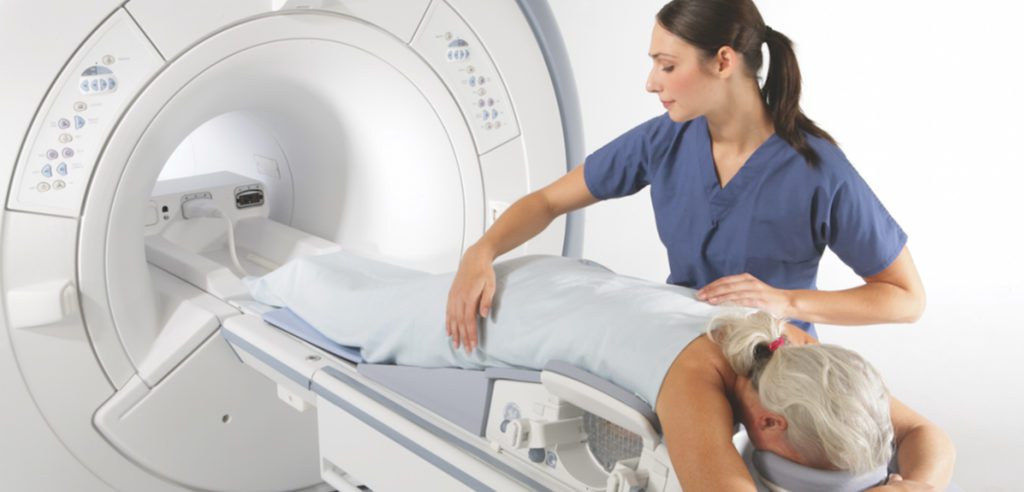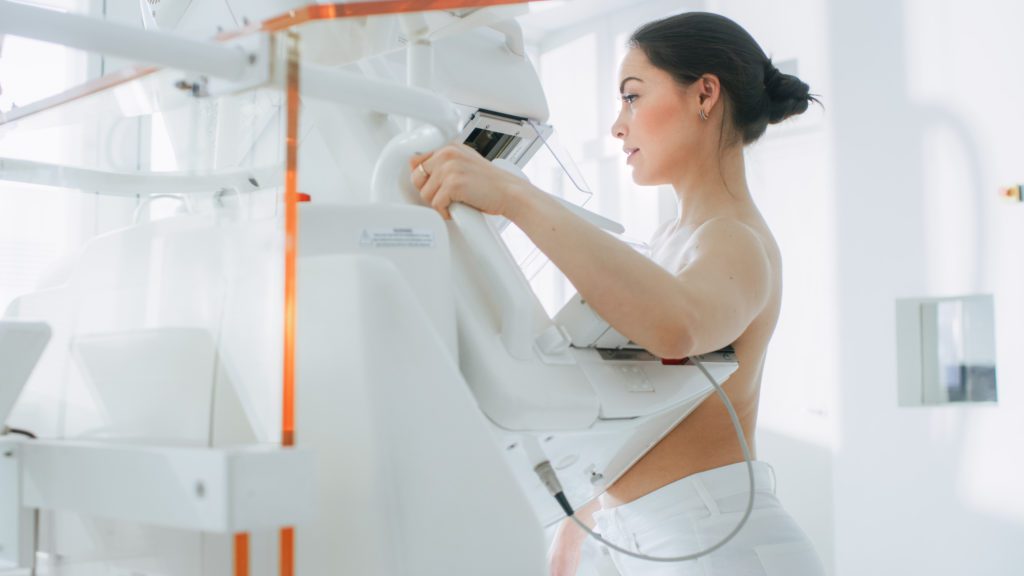When you learn that you’re at a higher risk for breast cancer, your first response might be to start worrying, which is completely understandable.
Your health and well being is important to the people who care for you.
Know that there are lots of healthcare resources to help make sure that you detect any problems early, accurately, and regularly. The most important of those is mammograms.
In this guide, we’ll show you what it means if you’re at a higher risk for breast cancer, including detailed info on mammograms for high-risk people.
What makes someone high risk for breast cancer?
There are many reasons why a person is at a higher risk for breast cancer. It’s not due to one single thing, but to a combination of factors.
For some, it could be a history of certain types of breast conditions or exposure to specific hormone therapies. Others might have dense breast tissues which have been linked to an increased risk.
Lifestyle factors such as diet, exercise, and alcohol consumption also play a role.
It’s a nuanced and complex matrix of factors, and understanding where you stand requires a frank and open discussion with your healthcare provider.
How do genetics and family history play a role in your risk level?
Genetics and family history are significant indicators of your risk level for breast cancer.
If your family tree has instances of breast cancer, especially in close family members or at a young age, it heightens your risk.
The presence of certain genetic markers, like the BRCA1 and BRCA2 mutations, further compounds this risk. These genetic traits are hereditary, passing the risk through generations.
Knowing your family’s health history and discussing genetic testing options with your healthcare provider can offer insights into your risk level and guide your screening decisions.
Why is personalized risk assessment crucial before starting screenings?
Every individual’s risk factors are unique, influenced by a blend of genetics, lifestyle, and personal health history.
A personalized risk assessment takes all these factors into account, creating a screening plan that’s tailored just for you.
It’s not about labeling you as high risk; it’s about understanding the nuances of your risk and how best to monitor and address it.
This tailored approach ensures that the screening is not just a routine process but a targeted, informed strategy, improving the chances of early detection and effective intervention.
How mammograms can help if you’re high risk
For individuals at high risk for breast cancer, understanding the role and potential of mammograms is essential. Mammograms can be pivotal tools in the proactive management of your health.
We’ll shed light on how mammograms contribute to the early detection of breast cancer, what high-risk individuals should anticipate during the screening, and how the mammogram experience might differ from that of the general population.
How do mammograms aid in the early detection of breast cancer?
Mammograms provide a detailed look at breast tissues, helping in identifying abnormalities or changes that might not be felt during a physical examination. For high-risk individuals, early detection through mammograms is crucial.
A mammogram can reveal growths at an initial stage, when they are most treatable.
Regular screenings can track subtle changes over time, offering a dynamic insight into your breast health.
The goal is not just early detection but also peace of mind, knowing that you are taking proactive, informed steps in monitoring your health.
What should I expect during a mammogram if I’m a high-risk individual?
If you’re high risk and preparing for a mammogram, it’s natural to have questions about what the experience entails. The process is thorough yet considerate, designed to be as comfortable as possible.
You’ll be guided through each step by a professional who understands the nuances of screening high-risk individuals. The scan involves capturing comprehensive images from various angles to ensure nothing goes unnoticed.
High-risk individuals might undergo a more detailed examination, possibly with additional images or specialized techniques to scrutinize areas of concern closely.
How are mammograms different for high-risk people?
High-risk individuals might start screenings at an earlier age or have them more frequently.
The technology used might also differ, with some opting for advanced imaging techniques to capture more detailed pictures or to examine dense breast tissue thoroughly.
The interpretation of the images is meticulous, often involving a team of specialists. The focus is not just on detecting cancer, but on understanding the complete landscape of your breast health, ensuring any changes are caught and addressed promptly.


How to find the right screening schedule for you
Good breast health is not just about deciding to get screened. It’s also about knowing when and how often to have a screening that has been tailored to your unique circumstances.
We’ll guide you through finding the right screening schedule, knowing when to begin regular screenings, and understanding the personal factors that might influence your individual screening timeline.
At what age should high-risk individuals begin regular mammograms?
Determining the right age to begin regular mammograms for high-risk individuals is a decision based on multiple factors, including family history, genetic predispositions, and personal health history.
Generally, the recommendation for high-risk individuals is to start screenings earlier than the general population.
Some guidelines suggest starting a decade earlier than the age at which your youngest family member was diagnosed.
However, the exact age can vary significantly based on individual risk factors. It’s a conversation that requires a detailed discussion with your healthcare provider, ensuring that the decision is personalized to your specific health profile and risk factors.
How often should you get a mammogram if you’re at high risk?
While annual mammograms are common for the general population, those at high risk might benefit from a more frequent schedule.
Some may require screenings every six months, alternating between mammograms and other forms of breast imaging to maintain a close watch on their breast health.
The key is a tailored approach, one that balances thorough monitoring with the practicalities of healthcare and personal comfort.
Your healthcare provider can offer insights into the most effective schedule for you, taking into account the latest research and guidelines.
What factors might alter your individual screening schedule?
Changes in your health, the discovery of new genetic information, or even developments in screening technology might prompt a revision of your screening frequency or methodology.
Additionally, how your body responds to screenings, or findings from previous mammograms, may also guide adjustments in your schedule. It’s a dynamic process, one that evolves with your health journey.
Staying in regular communication with your healthcare provider, keeping them informed about any new developments, and being responsive to their recommendations will ensure that your screening schedule remains as effective and personalized as possible.
Finding the right screening schedule is a crucial step in proactive health management for high-risk individuals.
How additional screening can help you
Beyond a regular screening, additional scans can provide a fuller picture of your breast health, especially when standard mammograms might not tell the whole story.
Let’s explore the studies that might be recommended alongside mammograms, along with breast MRI, and the role that genetic counseling and testing play in your screening process.


Besides mammograms, what other imaging is recommended?
Your healthcare provider and the breast imaging radiologist might suggest additional imaging methods, including ABUS breast ultrasound or Magnetic Resonance Imaging (MRI).
ABUS breast ultrasound is adept at examining specific areas of concern, especially in dense breast tissue where mammograms might be less effective.
A breast MRI scan provides a highly detailed view and is particularly beneficial for its sensitivity in detecting abnormalities.
These screenings are not replacements for mammograms but are often used in conjunction to provide a more complete understanding of your breast health.
How do MRI and other imaging techniques complement mammography for high-risk individuals?
While mammograms provide a fundamental baseline of breast imaging, MRI offers a different type of image, often revealing details that mammograms cannot.
Its ability to differentiate between benign and suspicious areas can be particularly beneficial, reducing the need for unnecessary biopsies.
When used together, mammography and MRI can provide a more comprehensive view, ensuring that any concerning areas are thoroughly examined and monitored over time.
What role does genetic counseling and testing play in your screening process?
Genetic counseling and testing can play a pivotal role in tailoring your breast cancer screening process.
For those with a family history or other risk factors that suggest a genetic predisposition, genetic counseling provides valuable insights.
It helps in understanding your risk, the implications of genes like BRCA1 and BRCA2, and how these might influence your screening strategy.
Testing for these mutations can guide the frequency and type of screenings, as well as potential preventative measures.
This personalized approach ensures that your screening regimen is not just based on general guidelines but is intricately tailored to your genetic blueprint.
How to schedule your mammogram appointment with us
Touchstone Medical Imaging offers mammograms in Arkansas, Colorado, Florida, Montana, Oklahoma, and Texas.
Reach out to us at Touchstone, and we’ll help you schedule a mammogram appointment at an imaging center near you, today.
We’re here to help you get the answers you need.


Frequently Asked Questions (FAQ)
Individuals are considered high risk due to factors like genetics, family history, or certain inherited conditions.
Genetics and family history significantly raise the risk, especially if close relatives have had breast or ovarian cancer or if genetic mutations like BRCA1 or BRCA2 are present.
Personalized risk assessments ensure that the screening schedule and methods are tailored to effectively monitor and manage each individual’s unique risk factors.
Mammograms help in early detection by revealing abnormalities or changes in breast tissue that might indicate the presence of cancer, often before symptoms appear.
High-risk individuals might undergo more frequent mammograms with additional imaging, like MRI, to meticulously monitor for any changes or signs of cancer.
High-risk individuals should consult their healthcare provider but often start regular mammograms earlier than the general population, sometimes as early as their 20s or 30s, based on their specific risk factors.
High-risk individuals may need mammograms more frequently, sometimes annually or even bi-annually, as recommended by their healthcare provider based on personal risk factors.
Additional screenings like MRI, ultrasound, or genetic counseling and testing might be recommended to provide a comprehensive evaluation of breast health and genetic risk.

